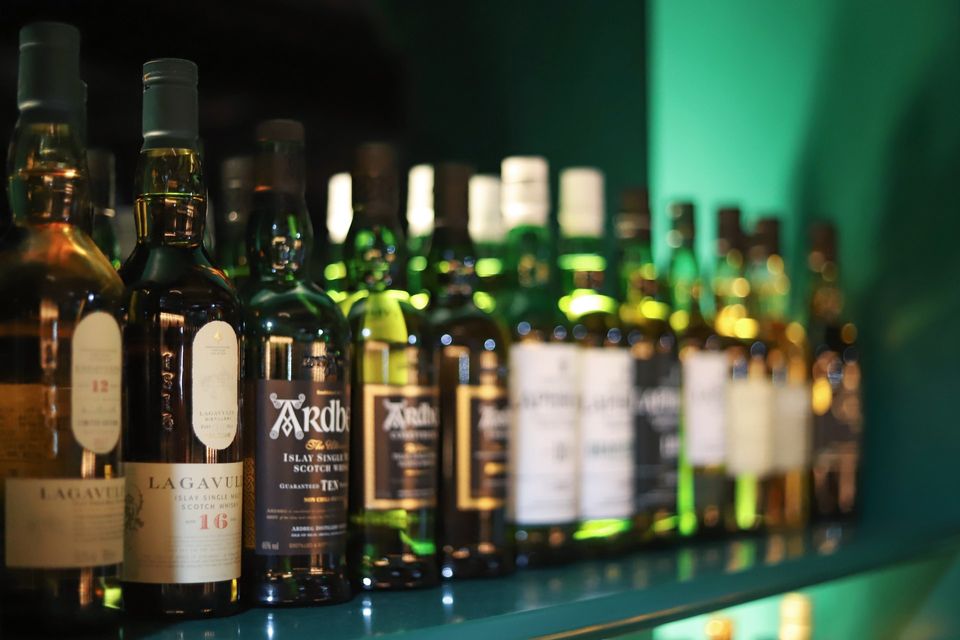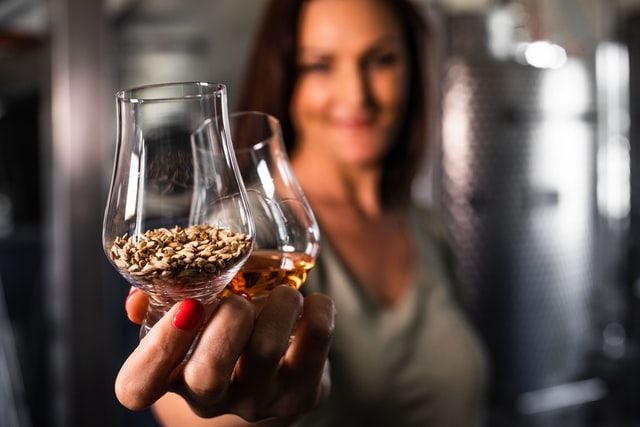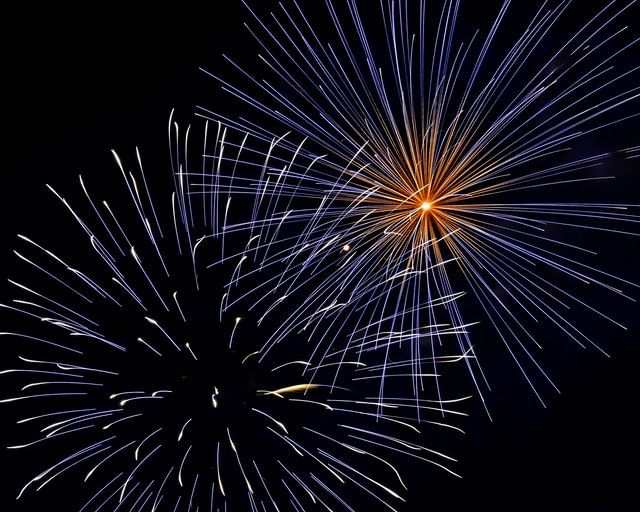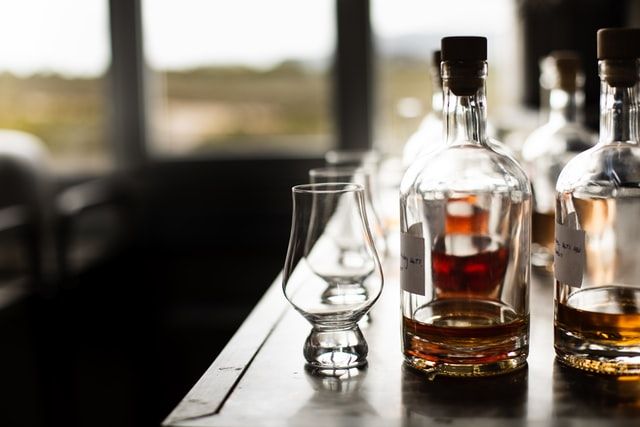How to taste whisky

What sets apart one whisky from another?
This question is very easily answered if you’re well versed in tasting and appreciating whisky. In this Newsletter, I will share some tips on tasting whisky in a way that heightens your appreciation of it.
The first thing I should say here is that, when it comes to appreciating whisky, taste is only one part of the whole experience. It is an important part, yes, but it's still just one part.
People who love whisky generally look at the following (among other things):
- Appearance (how does the whisky look?)
- Aroma (what aroma do I get?)
- Palette (how does the whisky taste?), and
- Finish (what aftertaste does it leave?).
Let's look at each of the above.

Appearance
In a future Newsletter, we will go into more detail about the appearance (mainly, colour) of a whisky, and see what it tells you about that particular whisky.
There are some general rules of thumb, but, as in life, there are exceptions to these rules.
For now, it suffices just to say that your appreciation of the whisky begins with what your impressions are, based on its colour, and whether (upon tasting the whisky), these impressions turn out to be right. (For example, people often assume that a dark coloured whisky will be strong, and a light coloured whisky will be gentle. Sometimes this is true, and, other times, not.)
Aroma
First, swirl the whisky. This helps to release its flavour.
The next step is to nose the whisky. The common advice is not to dive right in, but rather to ease gently into the aroma. We do this by nosing several times, each time taking a deeper breath.
While doing this, try to identify any particular flavours coming at you.
You may sometimes read tasting notes where people write about all sorts of seemingly farfetched flavours, e.g. "shortbread mixed with almond on a bed of autumn leaves". Pay these no mind. Don't worry if such imagery does not come to you when nosing (or indeed, tasting) a whisky.
Just identify what comes to you. It could be a general impression (e.g. woody, smoky, fruity), or it could be more specific. Just pay attention to what you're sensing; that's all you need to do.
It's also a good idea to put a little water in your whisky, and here, I mean no more than the tiniest possible drop. This helps release flavours that are trapped in the whisky. I normally put in no more than the tiniest possible drop; I find that that's enough to do the trick.
For a fuller experience, you can first taste a bit of the whisky neat, and then add the tiny drop of water. Then, taste it again to experience the effect of any flavours being released. Depending on the whisky, the unlocking of the flavours can be rather intense.
Palette
'But don't all whiskies taste the same?'
You've probably heard this question before, or a variant of it. I hear it quite regularly, and I understand the basis for it.
Thing is, you need to take the time to nose and taste different whiskies in order to identify their various (and differentiating) flavours. Many people don't do that, and so might miss out on some of the subtler flavours.
Also, if the whisky has a very high alcohol content, this can somewhat obscure the aroma and the taste.
Some whiskies are a bit easier to identify than others. For example, the smoky taste of peated whiskies is not hard to miss. However, there are other flavours in whisky that may take a bit of time to identify, e.g. certain fruity, floral, and cereal flavours. The idea is to take one's time. There is no rush, or at least, there shouldn't be.
Finish

Aftertaste is a big thing in whisky. Sometimes after you’ve had the initial taste of the whisky, you’re hit with a bouquet of other flavours following through. The aftertaste can also vary in duration, depending on the whisky.
So, when tasting a whisky, also look out for the finish. Some whiskies pack quite a surprise.
Some other points
The following two questions often get asked.
- What should you drink your whisky from?
- Should you put ice in whisky?
Let's also address these.
What should you drink your whisky from?

I always drink from a Glencairn glass, such as the one in the image above.
The Glencairn glass is generally recommended for whisky because its particular shape aids the appreciation of the whisky. The aromatic compounds of the whisky evaporate better (due to the rounded shape of the bottom of the glass). And then, the tapered top of the glass gently holds in these compounds. Also, the Glencairn glass (very helpfully) has a stem - if you hold the glass by the stem, you are then not holding the body of the glass, and warming up the whisky.
You'll sometimes see other types of glasses being used for whisky; these can differ in the quality of tasting. Speaking for myself, I've always got the best experience from using a Glencairn glass.
Should you put ice in whisky?
Personally, I do not.
I know that some people like to do this, and please feel free to do so if that works for you. However, ice can take something away from the flavour of the whisky. It is normally advised that, if you want to have ice in your whisky, it's always a good idea to nose and taste it neat first, so that you first experience the whisky in that state. You can then add some ice later on.
Conclusion
Whisky tasting can be enjoyable. It’s all about discovering the hidden secrets of the whisky.
Whisky tasting is great fun when done alone, and also when done with a group of likeminded people, for example, at whisky tasting events. These events are a good way to meet fellow whisky lovers, and get to learn about, and taste, different whiskies.
This year, many whisky tasting events have had to move online due to the covid-19 pandemic, but they have been no less enjoyable for that. Typically, the whisky samples are delivered by post to the participants. On the night of the whisky tasting (it almost always happens at night), everyone logs in to the online video event, and the tasting kicks off. Some events also include live tweets, so that others (outside the whisky tasting) can also share in the fun.
If you get a chance to attend a whisky tasting, I would encourage you to take part. It's generally good fun, and you get to learn a lot. Developing a nose and palette for whisky takes time. But it is certainly worth it, and great fun along the way.
I hope I have inspired you to go out tasting some fine whiskies. As always, feel free to share this Newsletter with anyone who likes whisky, and stories about whisky.